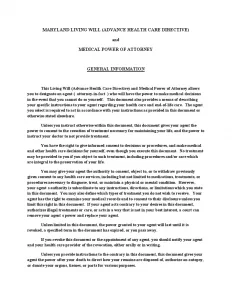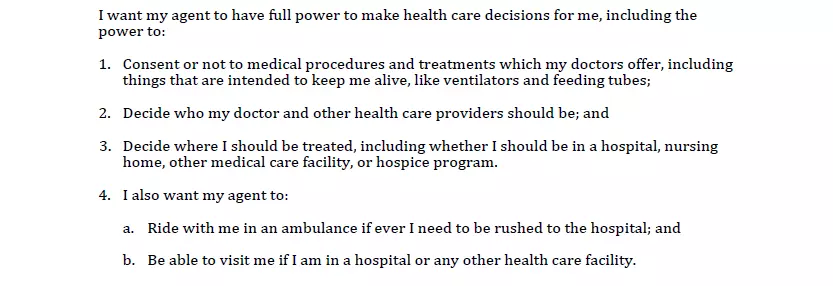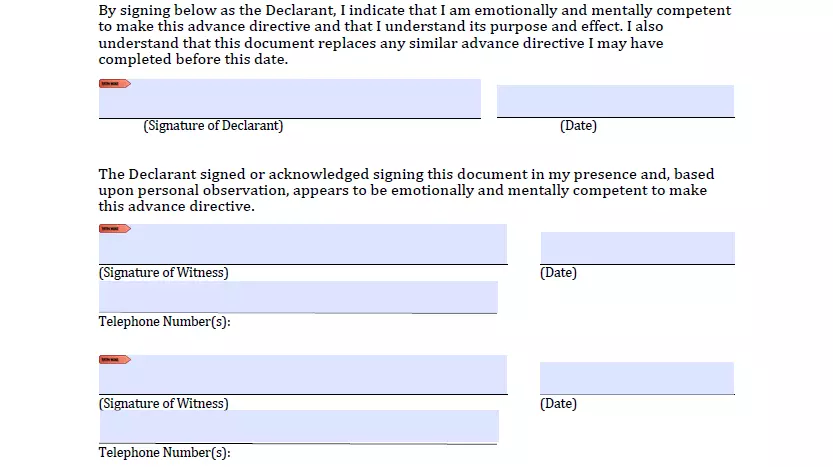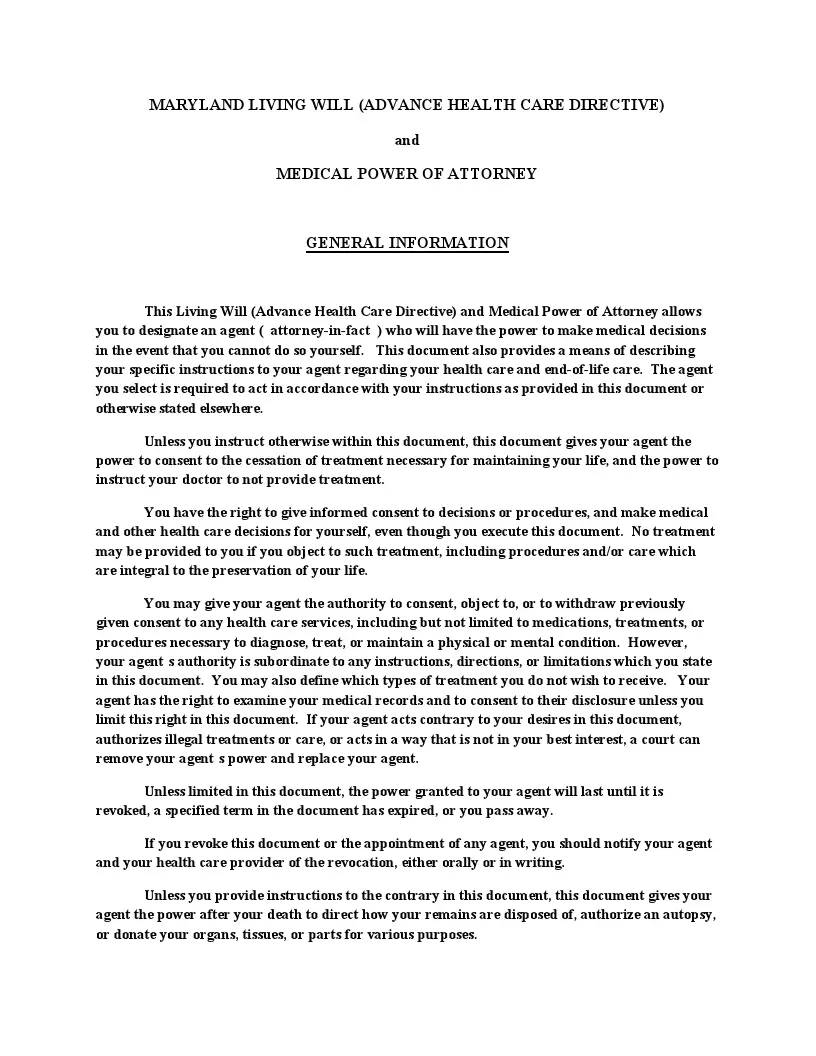Free Maryland Living Will Form
A Maryland advance directive is an official written or electronic document that allows a person over 18 to independently choose their end of life treatment options as well as choose a health care agent. Note that an Advance Directive is sometimes also referred to by other names such as Health Care Power of Attorney, Medical Power of Attorney, Living Will, or Health Care Directive.
Even though the creation of a living will form is more often related to elderly or seriously ill people, all people who have reached 18 should consider creating Free Living Will because an accident can happen to anyone.
For the document to take effect, it must be signed by two (2) witnesses. It is also recommended to store it in a safe but easily accessible place in case of an emergency.
Signing Requirements and Laws
A Maryland advance directive is a document that can be written, printed, or signed in an electronic form, According to the Health Care Decisions Act § 5-601 to § 5-618 (Maryland Health Care Decisions Act). This document must be signed by two witnesses. Both of them must be over 18 years of age.
Definitions:
- Artificial Nutrition and Hydration – these are any nutrients, food, or liquids introduced into the patient’s body intravenously or through a feeding tube.
- Life-Sustaining Treatment – these are procedures and medicines, which are applied to prolong life and the process of dying. The list of such procedures and medications includes antibiotics, lung ventilation, dialysis, cardiopulmonary resuscitation, and transfusions.
- Permanent Unconscious State – this is a condition in which the patient completely loses consciousness, and the recovery of the patient is not expected shortly. These conditions include irreversible coma and vegetative state.
- Terminal Condition – it is an incurable disease that inevitably leads to death or a permanently unconscious state, and the recovery of the patient is not expected shortly.
It is worth noting that in the event of a patient’s pregnancy, the Health Care Agent must follow the specific instructions described in the appendix to this document or in a specific section of the document.
If all of the above conditions are met, the person reaches 18 years of age and the presence of two witnesses 18 years or older, the document can be signed and considered valid.
Maryland Living Will Form Details
| Document Name | Maryland Living Will Form |
| State Form Name | Maryland Advance Directive: Planning for Future Health Care Decisions |
| Signing Requirements | Two Witnesses |
| Validity Requirements | Section 5-602(c) |
| Specific Powers | Section 5-601(n) |
| Avg. Time to Fill Out | 13 minutes |
| # of Fillable Fields | 48 |
| Available Formats | Adobe PDF; Microsoft Word |
| State Laws: Maryland Annotated Code, Health General, Sections 5-601 to 5-618 | |

Steps to Fill Out the Form
There are five main points to be followed when creating a Maryland advance directive.
1. Download the form
Download the form, open it, and start filling out online. To ensure correctness and efficiency, use our convenient Online Forms Building Software to fill out the Maryland Living Will form.
2. Identify the Authorizing Principal
Identify the principal who will appoint the Health Care Agent, the form will begin with a blank space labeled “Print Name” to. Next, the column “Date of Birth” will follow, in which you need to enter the principal’s date of birth in the Month / Day / Year format.

3. Declare the Primary Agent by Documenting Their Information
Identify the Health Care Agent of your choice, you must enter the Health Care Agent’s full legal name and the Health Care Agent’s address to identify exactly who will make Health Care decisions for you if you are unable to do so.
If you have such a need, you can designate a backup Health Care Agent if the primary Health Care Agent cannot fulfill its responsibilities.

4. Review the Rights and Powers of The Health Care Agent(s)
Specify the rights of the Healthcare Agent and limit them if required. This section lists four assertions that contain the Health Care Agent’s authority that the principal can agree to by signing the document or refuse by deleting the claim from the document. The first Statement gives the Health Care Agent the authority to make decisions about medical procedures. The second Statement gives the Health Care Agent the right to decide who will be appointed as the patient’s PCP. The third statement empowers the Health Care Agent to decide the patient’s discharge and admission to any type of healthcare facility. The fourth statement empowers the Health Care Agent to decide whether to escort a patient in an ambulance and visit a patient for any kind of medical facility.

5. Ensure that All the Relevant Parties Sign This Form
Sign the document to make it valid. The principal must sign the document if the principal agrees with everything described and said in it, and then put the date. After that, two witnesses must put their signatures and date. Any person over 18 years of age who was physically present when the principal signed the document is considered a witness.


Various other fillable Maryland forms readily available for download on FormsPal and that can be customized in our hassle-free document builder.

